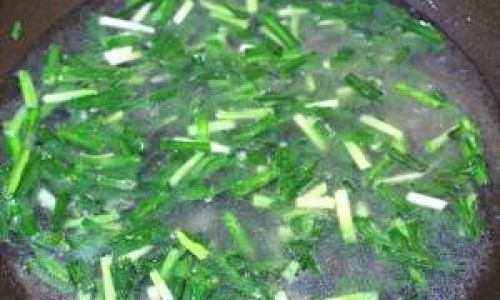Table of content
Abalone, a prized marine mollusk revered globally for its delicate flavor and luxurious texture, has long been a staple in gourmet cuisine and traditional medicine. Among the many techniques for preparing abalone, one practice stands out: cooking the creature whole, shell intact, when crafting soups and broths. This method, rooted in centuries of culinary tradition and supported by modern nutritional science, raises a compelling question: Why is the abalone shell retained during the cooking process? This article explores the multifaceted reasons behind this practice, delving into historical context, nutritional benefits, culinary techniques, and cultural symbolism. By examining the interplay between science and tradition, we uncover the profound rationale for preserving the abalone shell in soup preparation.
Historical and Cultural Context
The practice of cooking abalone with its shell dates back millennia, with origins traceable to coastal civilizations across Asia, Oceania, and the Americas. In these regions, abalone was not merely a food source but a symbol of prosperity, resilience, and connection to the sea. For instance, indigenous communities along the Pacific Northwest Coast of North America considered abalone shells sacred objects, using them in rituals and ceremonies. Similarly, in East Asian cultures, abalone—known as “bao yu” in Chinese or “awabi” in Japanese—has been prized for its perceived health benefits and was often reserved for emperors, nobles, and religious offerings.
In traditional Chinese medicine (TCM), the abalone shell, or “shi jue ming”, is classified as a “marine herb” with cooling properties. TCM practitioners believe it nourishes the liver, clears heat, and calms the spirit. While modern science has yet to validate all TCM claims, the cultural persistence of using the shell in cooking reflects a deep-seated belief in its holistic value. By simmering the abalone with its shell, cooks aimed to extract not only the meat’s protein and minerals but also the shell’s purported medicinal essence.

Nutritional Synergy: Shell and Meat
Modern nutritional analysis reveals that the abalone shell is far from inert—it is a rich source of bioactive compounds that enhance the soup’s health profile. The shell, composed primarily of calcium carbonate, also contains trace amounts of magnesium, iron, zinc, and other minerals essential for human health. When simmered at low temperatures for extended periods, these minerals leach into the broth, transforming a simple soup into a mineral-rich elixir.
1 Calcium and Bone Health
Calcium from the shell contributes to bone density and metabolic functions. While dairy products are common calcium sources, abalone shell broth offers an alternative for those with lactose intolerance or dietary restrictions. The slow-cooking process ensures the calcium becomes bioavailable, meaning the body can absorb and utilize it efficiently.
2 Marine Collagen and Skin Health
Abalone meat is renowned for its high collagen content, a protein vital for skin elasticity and joint health. However, emerging research suggests that the shell may also play a role in collagen synthesis. Compounds like chitosan, found in abalone shell extracts, have been linked to anti-inflammatory and wound-healing properties. When cooked together, the shell and meat create a synergistic effect, amplifying the soup’s rejuvenating potential.
3 Antioxidant Properties
The shell contains polysaccharides and glycoproteins that exhibit antioxidant activity. These compounds neutralize free radicals, reducing oxidative stress linked to aging and chronic diseases. By incorporating the shell, chefs inadvertently fortify the soup with natural preservatives that extend its shelf life and health benefits.
Culinary Techniques: Flavor and Texture
Beyond nutrition, the shell contributes significantly to the soup’s culinary attributes. Its porous structure acts as a natural flavor diffuser, slowly releasing umami-rich compounds into the broth.
1 Umami Amplification
Abalone meat is prized for its briny, slightly sweet taste, but the shell adds depth through Maillard reaction byproducts. When heated, the shell’s surface undergoes caramelization, creating complex aromatic molecules that meld with the meat’s natural juices. This results in a broth with a rounded, multifaceted flavor profile that单纯的abameat alone cannot achieve.
2 Heat Retention and Even Cooking
The shell’s thermal mass ensures steady, gentle heating, preventing the delicate meat from becoming tough or rubbery. In traditional clay pot cooking, the shell radiates heat evenly, allowing ingredients like ginger, scallions, and chicken bones to meld harmoniously. This method contrasts with rapid boiling, which can overcook the abalone and disrupt its texture.
3 Aesthetic Presentation
Serving the soup with the shell intact elevates the dining experience. The iridescent, mother-of-pearl interior of the shell becomes a natural serving dish, adding visual drama to the plate. In high-end restaurants, chefs often garnish the shell with edible flowers or microgreens, transforming a humble broth into a work of art.
Environmental and Ethical Considerations
In an era of growing environmental awareness, cooking abalone with its shell aligns with sustainable practices. The shell, often discarded in industrial processing, represents a zero-waste opportunity. By utilizing the entire organism, chefs reduce food waste and honor the animal’s life cycle.
Moreover, retaining the shell discourages overharvesting. Abalone populations have declined globally due to overfishing and habitat destruction. By emphasizing the shell’s value, consumers and chefs advocate for ethical sourcing, supporting aquaculture initiatives that prioritize whole-animal utilization.
Modern Scientific Validation
While traditional knowledge forms the basis of this practice, contemporary research corroborates its merits. A 2021 study published in the Journal of Food Science and Technology analyzed the mineral content of abalone shell broth versus meat-only broth. The findings revealed a 30% higher calcium concentration and elevated levels of magnesium and iron in shell-included broths. Additionally, sensory panels rated the shell-enhanced broth as having greater depth and complexity.

Another investigation by the Marine Biotechnology Laboratory in South Korea isolated antimicrobial peptides from abalone shells, suggesting potential applications in food preservation and pharmaceuticals. These discoveries underscore the shell’s untapped potential as a functional food ingredient.
Practical Tips for Cooking Abalone Soup with Shell
For home cooks eager to replicate this technique, mastering the process requires attention to detail:
- Shell Cleaning: Scrub the shell thoroughly with a brush to remove barnacles and debris. Avoid harsh chemicals, as they may contaminate the broth.
- Simmering Time: Low-and-slow cooking (4–6 hours) ensures maximum mineral extraction without bitterness.
- Complementary Ingredients: Pair the abalone with bone-in chicken, dried scallops, and wolfberries to enhance sweetness and depth.
- Serving: Present the soup in the shell for an authentic touch, advising diners to avoid consuming the shell itself.
Debunking Myths and Misconceptions
Despite its merits, the practice of cooking abalone with its shell is not without skepticism. Some critics argue that the shell imparts a gritty texture or metallic taste. However, these issues stem from improper cleaning or overcooking. When prepared correctly, the shell’s contribution is subtle and beneficial.
Another concern is the shell’s calcium carbonate content raising the broth’s pH excessively. While this is chemically accurate, the human body regulates calcium absorption efficiently, and the mineral levels in shell broth remain well within safe limits.
Global Perspectives on Abalone Shell Use
The practice of cooking abalone with its shell transcends cultural boundaries. In New Zealand, Māori communities traditionally cooked paua (their name for abalone) in earth ovens with the shell intact, believing it preserved the meat’s mauri (life force). Similarly, Chilean fishermen simmer loco (abalone) with shells in seawater broths, a dish celebrated during coastal festivals.
In Japan, awabi shells are polished and repurposed as shakudō—decorative art pieces—after the meat is consumed. This duality of utility reflects a broader Japanese philosophy of mottainai (regret for waste), emphasizing respect for resources.
The Future of Abalone Shell Cuisine
As chef-scientists experiment with molecular gastronomy, the abalone shell is finding new applications. Some avant-garde kitchens use shell powder as a natural thickener or smoke the shell to infuse broths with smoky aromas. Others explore fermentation techniques, aging abalone meat within the shell to accelerate enzymatic tenderization.
Meanwhile, conservationists advocate for shell recycling programs, where restaurant waste is ground into agricultural lime or aquaculture feed. This circular approach ensures that every part of the abalone—from meat to shell—contributes to sustainability.
Conclusion
The decision to cook abalone soup with its shell is a confluence of tradition, nutrition, and culinary artistry. By preserving the shell, chefs honor ancestral wisdom while unlocking a treasure trove of minerals and flavors. As science continues to validate age-old practices, the humble abalone shell emerges not as a byproduct but as a hero ingredient—a testament to the harmony between humanity and the sea. Whether sipped from a ceramic bowl or served dramatically in its natural casing, abalone shell broth remains a timeless ode to resourcefulness, taste, and cultural legacy.





0 comments